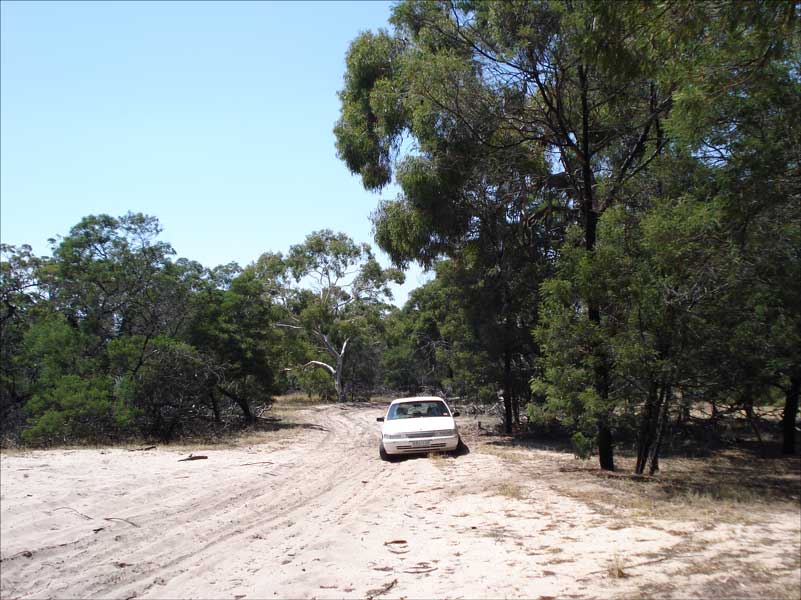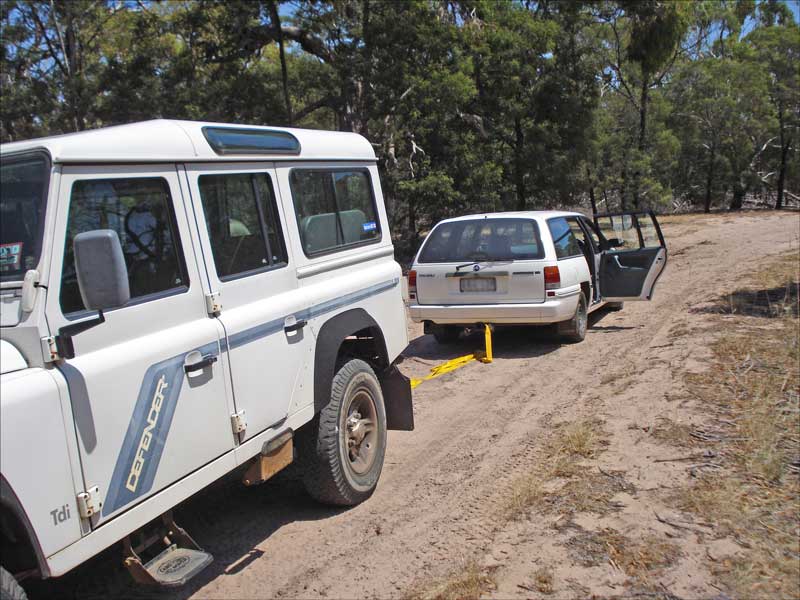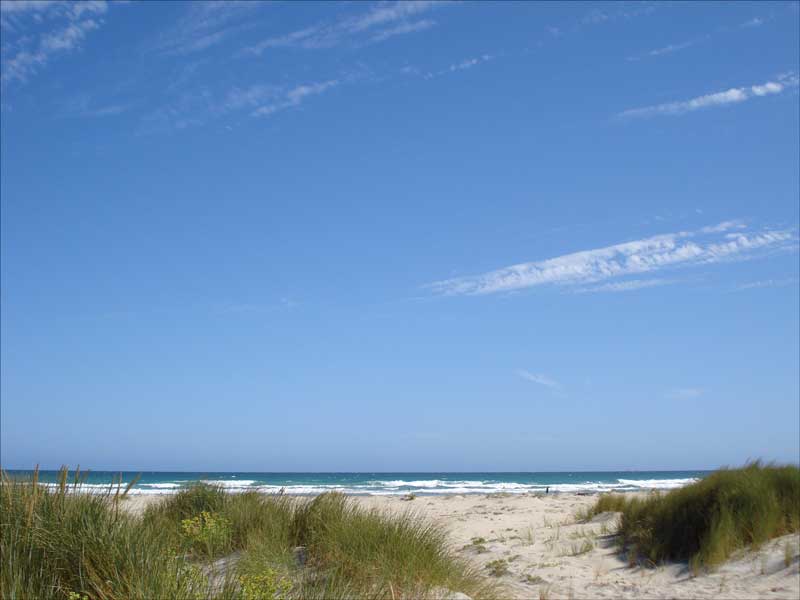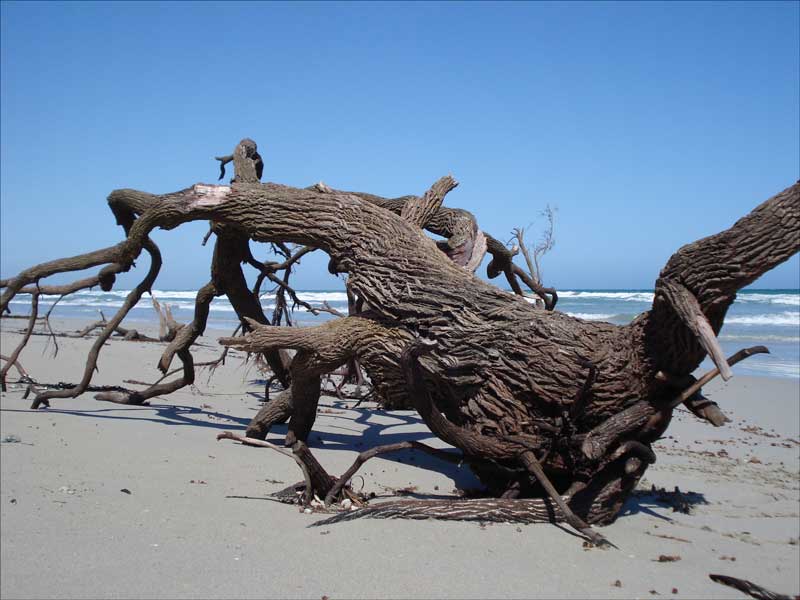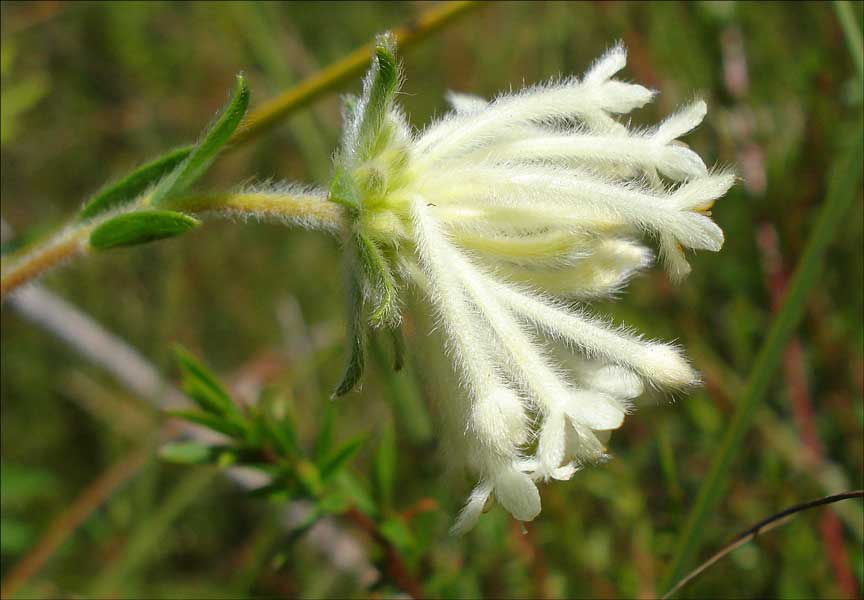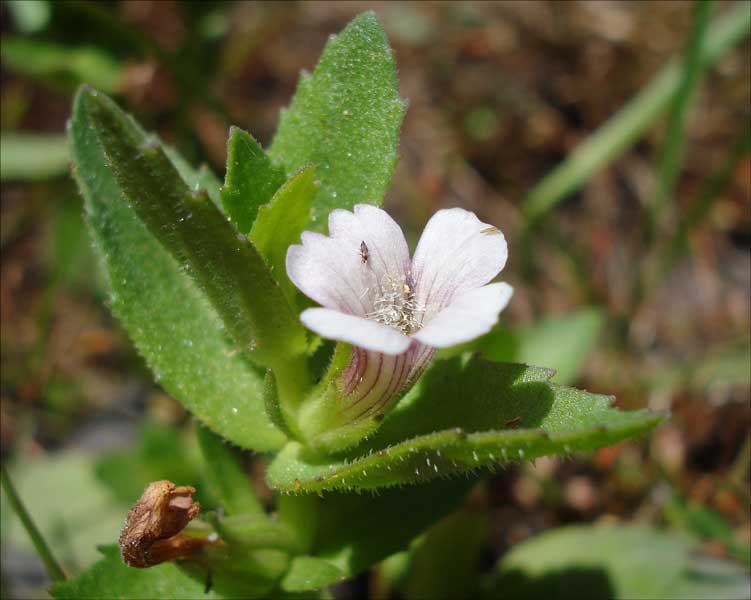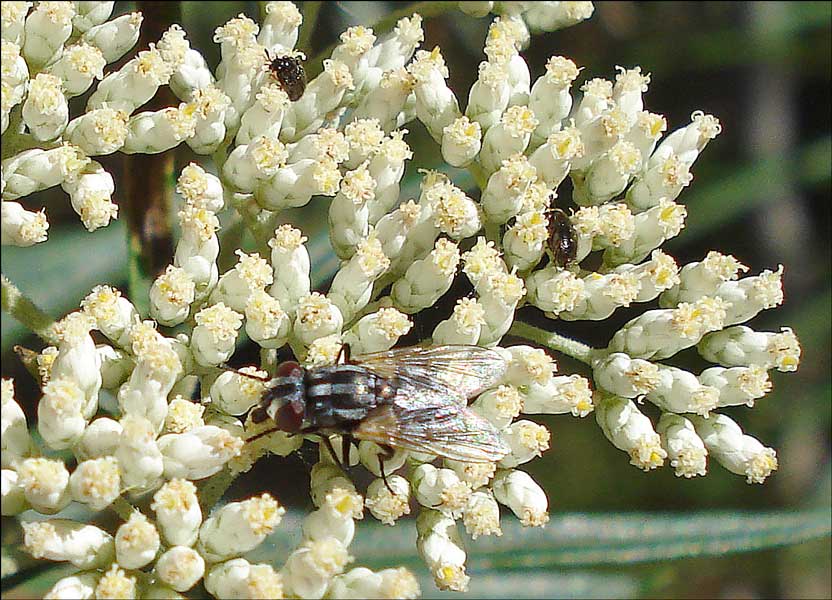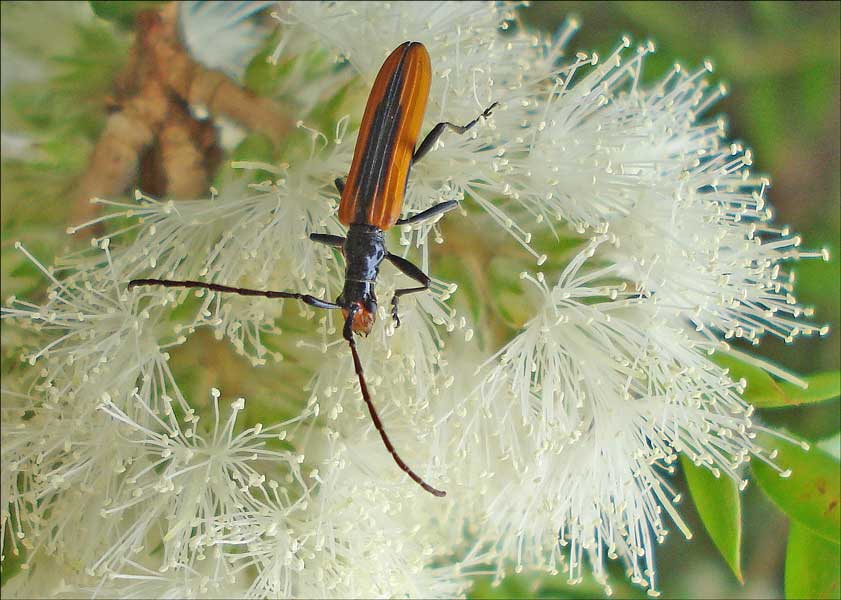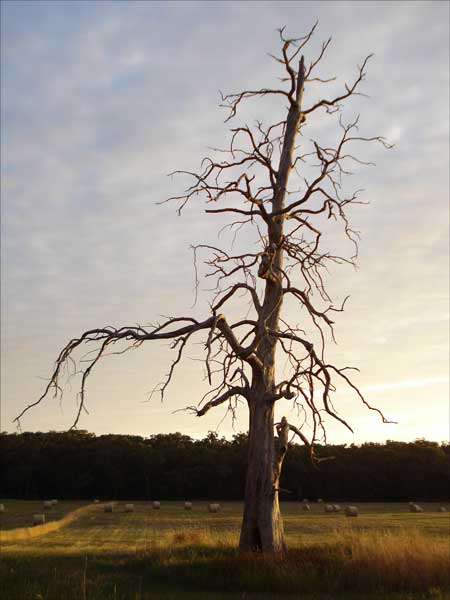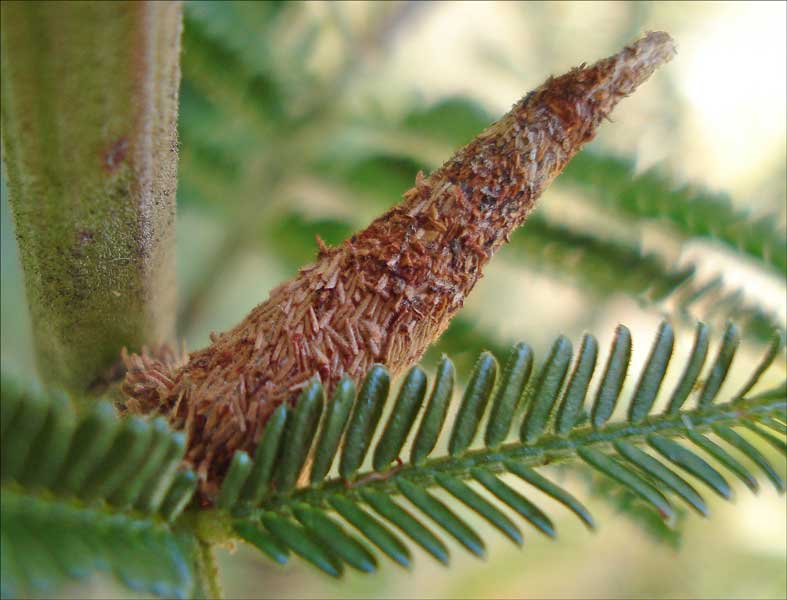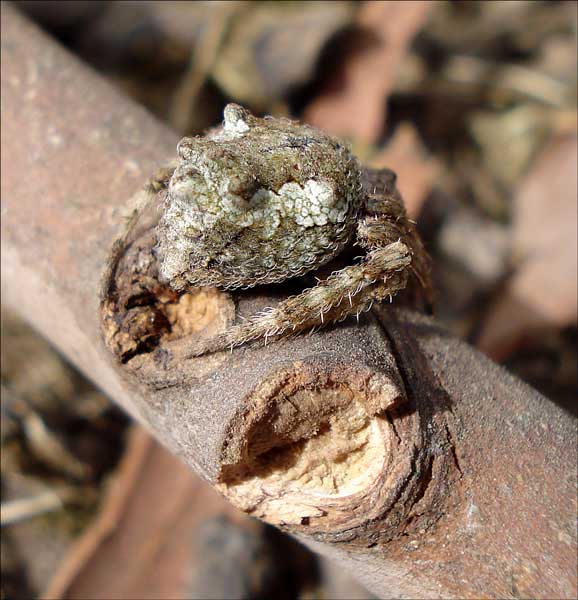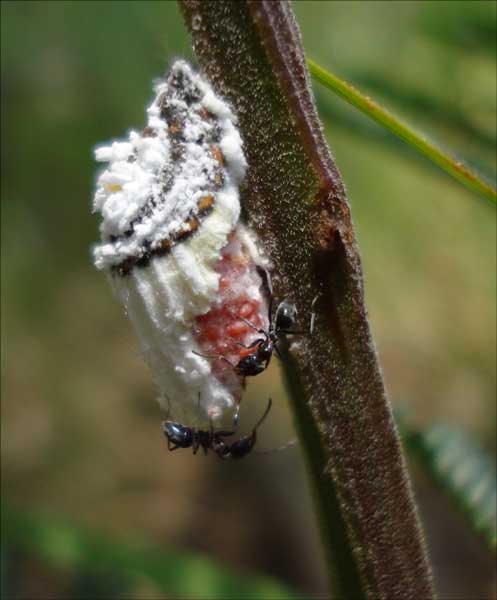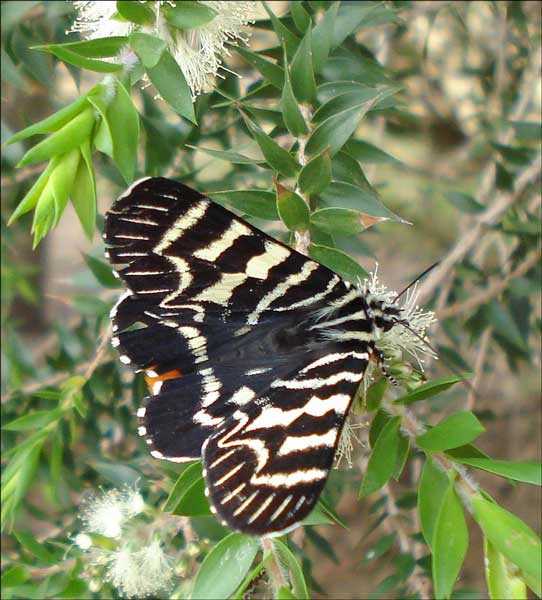This morning there were no pressing commitments, and the house work could wait, so I headed out to Inverleigh Flora and Fauna Reserve about 30 km west of Geelong. The Reserve used to be a Common (for firewood and grazing) but it now has a Friends group, and is a very interesting 1000 ha patch of natural vegetation. There are plants here that are not found anywhere else, and the birds like the mix of trees, shrubs and open space.
The Inverleigh Golf Course runs along one boundary, and they must have installed this opening for the kangaroos. Judging by the worn track it must be effective. It's one way of protecting the fence. Pity we can't use the same method at the farm - the sheep would love the escape route.
I was slowly driving along one track listening for birds, and not taking too much notice of the track itself, and suddenly found myself in a predicament. Bogged in the sand.
I put leaves and sticks behind the wheels and tried backing out. No good, I only dug myself in deeper. With images from the film Japanese Story in my mind, I had to decide what to do. Should I ring a friend, or the RACV? Ended up ringing a friend who drove out from Geelong and rescued me. (Thanks Dick.) Mobile phones are great when they work. It certainly saved me a long walk. A sandy soil is great for Australian plants but I'll have to respect it more in the future.
Tuesday 22 January 2008
Tuesday 15 January 2008
Narrawong
In 1836 the explorer Major Mitchell named the small river the Surry, but it's now called the Surrey. It flows (when not blocked by sand) out to sea at Narrawong, east of Portland, on the south coast of Victoria. When I was a child this was 'our' beach. It was about 15 minutes from home and the river provided a safe - and warm - swimming spot for children. It still does. Over the sand dune was the open beach that is now patrolled by a Lifesaving Club in summer but wasn't when I was young.
When I went to Narrawong recently there was evidence of a stormy winter or spring. Lots of trees and branches (of Moonah perhaps?) were embedded in the sand, and the sand dune at the very high tide level has been undercut by the storms, creating a sand cliff. My nephew gazes at the sea and there is no land between him and the Antarctic.
In 1987 a 15-metre Sperm Whale beached itself at Narrawong. The decision was made to bury it and retrieve it at a later date. Eleven years later, in 1999, they uncovered the skeleton (that still had blubber attached), cleaned it (in a car wash initially) and employed a local builder to put it together. It's now on display at the Portland Maritime Discovery Centre. It even has a name – Skeletonia.
In winter Narrawong is a very reliable spot to find Hooded Plovers, a bird under threat from beachwalkers, foxes and dogs because it likes to nest on the sand. I've been on Hooded Plover counts along this stretch of coast, wonderful 15 kilometre walks along the sandy beach with not a house or a person in site. We can only hope that it stays that way.
When I went to Narrawong recently there was evidence of a stormy winter or spring. Lots of trees and branches (of Moonah perhaps?) were embedded in the sand, and the sand dune at the very high tide level has been undercut by the storms, creating a sand cliff. My nephew gazes at the sea and there is no land between him and the Antarctic.
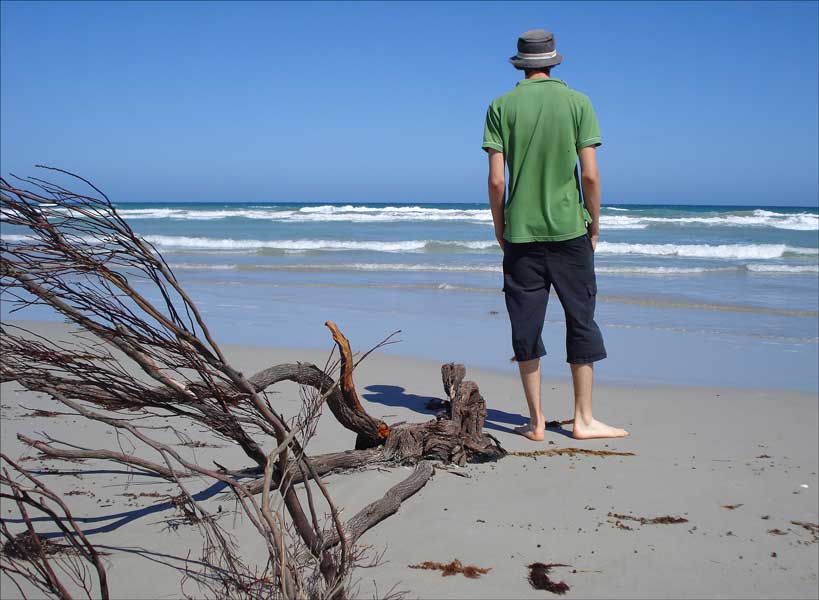
In 1987 a 15-metre Sperm Whale beached itself at Narrawong. The decision was made to bury it and retrieve it at a later date. Eleven years later, in 1999, they uncovered the skeleton (that still had blubber attached), cleaned it (in a car wash initially) and employed a local builder to put it together. It's now on display at the Portland Maritime Discovery Centre. It even has a name – Skeletonia.
In winter Narrawong is a very reliable spot to find Hooded Plovers, a bird under threat from beachwalkers, foxes and dogs because it likes to nest on the sand. I've been on Hooded Plover counts along this stretch of coast, wonderful 15 kilometre walks along the sandy beach with not a house or a person in site. We can only hope that it stays that way.
Thursday 10 January 2008
Summer beauties
Two more pale summer flowers. Woolly Rice-flower Pimelea octophylla grows in woodland on sandy soil. It's a beautiful shrub, with nodding flowers. You can see why it's called 'woolly', and the scientific name refers to the eight bracts behind the flowers. The second one, with very pale pink trumpets, grows in damp areas. It's an Austral Brooklime Gratiola peruviana. Both were growing in Annya State Forest north of Heywood.
Lunch time
What is it about white flowers in summer? Only one of the photos is of a plant natural to the Homerton area, but insects and beetles were loving the food sources available. Not much else was flowering in the bush.
The House Fly is on a Wild Carrot. The carrot is a weed that grows on the roadsides.The Flesh Fly is on a Cassinia. We used to call it Christmas Bush because it flowers at Christmas time.
The beetle is on a melaleuca growing in the farm garden.
Lone eucalypt
In the 1840s the area that is now our farm was part of a squatter's station on Crown Land, and the natural vegetation was left more or less intact. In the 1860s the land was opened up for selection and the land was purchased on a lease arrangement from the government. As part of the agreement the farmer had to clear and fence the land. This was done gradually, and the clearing was not always total. Trees were often left isolated in paddocks.
We have a few remnant trees on our farm, but they are dying or dead. This happens because a tree that has grown up surrounded by other vegetation in a bush doesn't cope very well when it is left to stand alone. We leave them after they die, because so many birds use them as lookout trees and resting places.
Monday 7 January 2008
Take your home with you when you go
A beautifully constructed larval case caught my eye. It was 1-2 cm long, tapered and covered in many small twigs. The lavae live in the case and feed by protruding their head from one end, and carry the case with them when they move on to another food source. This one was on bracken. It's probably one of the Case Moths of the Psychidae Family.
Common but not ordinary
I like lichen, and the old apple tree is covered in a multicoloured carpet. After taking some photos I walked away, felt the spider in my hair and reacted of course, flicking it away. Then I decided to find it to see if I'd escaped death by a narrow margin.
The photo below was taken on the ground before the spider moved onto a small stick and curling up to an inconspicuous knot. I lifted the stick up and returned the spider to the apple tree, and it immediately moved to a patch of lichen and sat immobile. I would have had great difficulty seeing it if I didn't know where it was.
It's a Garden Orb-weaving Spider Eriophora biapicata. This species is common and can be identified by the humps on its back, and the bright red base of its legs. Its main claim to fame is that it builds a large circular web at dusk (usually, in my garden, in the path of a certain husband organising the rubbish bins) and devours it at dawn, repeating the process the following night. They rarely bite by the way, and if they do it's not usually a problem so my life was not under threat.
The photo below was taken on the ground before the spider moved onto a small stick and curling up to an inconspicuous knot. I lifted the stick up and returned the spider to the apple tree, and it immediately moved to a patch of lichen and sat immobile. I would have had great difficulty seeing it if I didn't know where it was.
It's a Garden Orb-weaving Spider Eriophora biapicata. This species is common and can be identified by the humps on its back, and the bright red base of its legs. Its main claim to fame is that it builds a large circular web at dusk (usually, in my garden, in the path of a certain husband organising the rubbish bins) and devours it at dawn, repeating the process the following night. They rarely bite by the way, and if they do it's not usually a problem so my life was not under threat.
Sunday 6 January 2008
A cottony cushion
The other day I was resting one hand on the ground while taking a photo and a viscious bull ant got me and wouldn't let go! My little finger was inflamed and itchy for several days and I was asked if I'd applied bracken. No, I hadn't but I should have, because what I was photographing was on a bracken stem.
A while ago my daughter was stung by a bull ant and an uncle suggested the bush remedy - break off a frond of bracken and apply the bracken 'juice' to the site of the bite. It worked, in that the crying stopped. Was it mind over matter or does it really work?
The bull ant bit me while I was having a close look at a Cottony Cushion Scale Icerya purchasi on the stem of a bracken. (I didn't identify the bull ant, but it was big, very big. In fact the more I think about it, it was huge.) But I did identify the scale. The mother scale is at the top of the object and apparently up to 1000 red eggs are laid into the sac below. They can be clearly seen in the photo. Some ants - don't know whether they were the type that bit me - were feeding on the mould and for a while I wondered if they were eating the eggs, but I read that the scale insects secrete a lot of honeydew which attracts the ants. Possibly it is a form of defence for the scale. And I don't know why the scale was on bracken because their normal habitat is a wattle.
A while ago my daughter was stung by a bull ant and an uncle suggested the bush remedy - break off a frond of bracken and apply the bracken 'juice' to the site of the bite. It worked, in that the crying stopped. Was it mind over matter or does it really work?
The bull ant bit me while I was having a close look at a Cottony Cushion Scale Icerya purchasi on the stem of a bracken. (I didn't identify the bull ant, but it was big, very big. In fact the more I think about it, it was huge.) But I did identify the scale. The mother scale is at the top of the object and apparently up to 1000 red eggs are laid into the sac below. They can be clearly seen in the photo. Some ants - don't know whether they were the type that bit me - were feeding on the mould and for a while I wondered if they were eating the eggs, but I read that the scale insects secrete a lot of honeydew which attracts the ants. Possibly it is a form of defence for the scale. And I don't know why the scale was on bracken because their normal habitat is a wattle.
When a butterfly is a moth
What was it? I searched through my butterfly references in vain, looking for a black and white butterfly with orange tufts on its legs and abdomen. Then the penny finally dropped. I looked in the moth references instead and there it was. The Grapevine Moth Phalaenoides glycinae was flying around and feeding on the blossom of a Melaleuca.
Apparently it's a common day-flying moth but I don't remember seeing one before. There aren't any grapevines within cooee either but as it also breeds on guinea-flowers and willow herbs and both of those plants are in the bush nearby I'm supposing it was 'at home'.
The moth was moving fairly quickly around the blossom and the first photo is blurred but I'm including it because it shows the remarkable orange tufts. Now why would a moth want to evolve that colouring?

And on one of my bush rambles (on a day that wasn't enervatingly hot) this butterfly sat still on a bracken frond long enough for me to grab a couple of photos. It's a female Common Brown. The larva feed on Tussock Grass and Kangaroo Grass.
Subscribe to:
Posts (Atom)


